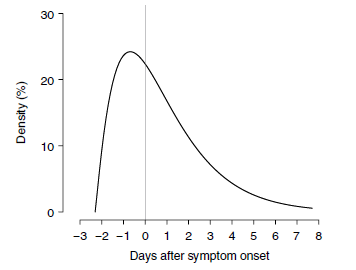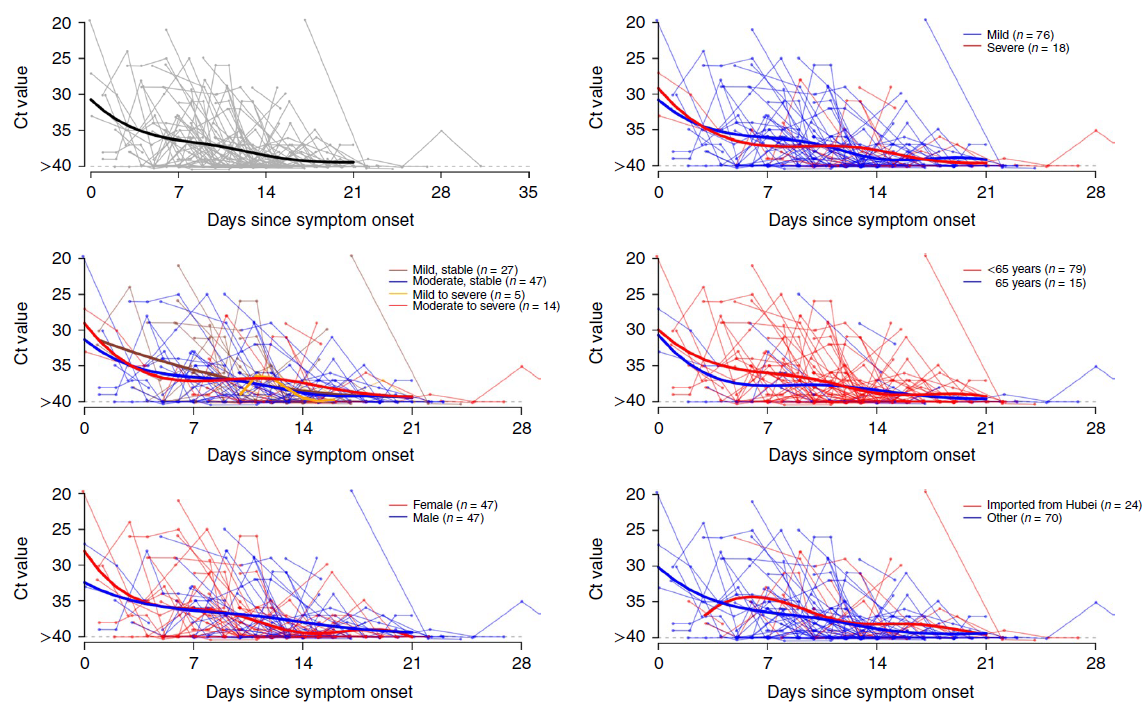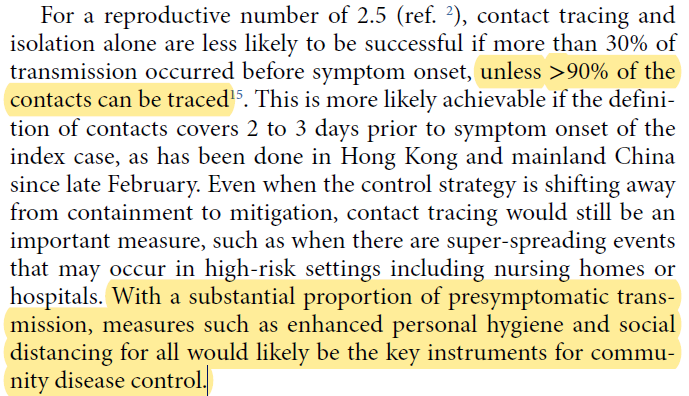A study on viral shedding and transmissability was publshed in Nature today.
A couple of TL;DRs
Study of viral shedding in 94 #COVID19 cases, finding that infectiousness peaked up to 2 days before symptom onset, and that 44% of secondary cases were infected when the index cases were pre-symptomatic. Active case-finding crucial. #SARSCoV2 #HCoV19 https://t.co/AjUnmMU1nR
— Dr Zoë Hyde (@DrZoeHyde) April 15, 2020
Latest research by @gmleunghku reports #COVID19 patients are most infectious in asymptomatic stage,i.e. 2 days before disease onset. The infectiousness comes down 1 day after onset, so disease transmission substantially occurs when patient is asymptomatic. https://t.co/nEo8rsQCJC
— Nousheen Zaidi (@Nosheen_Z) April 15, 2020
In the study, the researchers collected 414 throat swabs from 94 patients, finding
high viral loads soon after symptom onset, which then gradually decreased towards the detection limit at about day 21.
They then looked at 77 cases of people and who they likely caught the virus form to infer that 44% of the infected were infected from someone who was pre-symptomatic.
Here’s their final estimate of the infectiousness profile

They also found no difference between the amount of shedding and various factors such as severity, age, sex, etc

The study has implications for public health strategy

